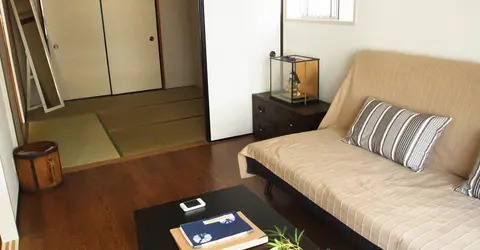Ningyocho Guide: Discover Tokyo's Hidden Gem
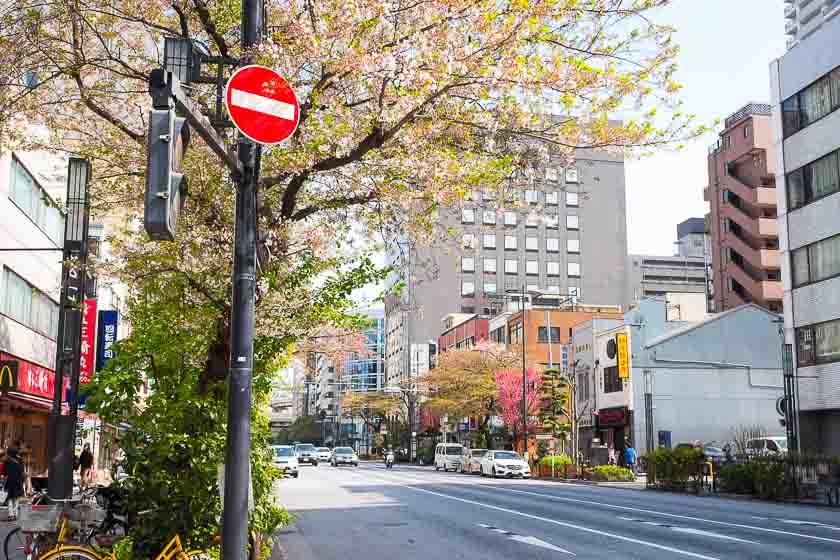
Ningyocho-dori Street, Ningyocho, Tokyo
Nestled in the heart of Tokyo's Chuo ward, Ningyocho is a charming district that offers a unique glimpse into the city's rich history and traditional culture. This quaint neighborhood, whose name literally means "Doll Town," has managed to retain much of its Edo-period charm despite the rapid modernization of the surrounding metropolis. With its old-style shopping streets, traditional craft shops, and renowned eateries, Ningyocho provides visitors with an authentic Tokyo experience far removed from the bustling tourist hotspots. From its fascinating history as an entertainment hub to its modern-day appeal as a food lover's paradise, Ningyocho invites you to step back in time and discover a different side of Tokyo.
Exploring Ningyocho's rich history and cultural significance
Ningyocho's history dates back to the early Edo period when it was established as a vibrant entertainment district. The area was once home to numerous kabuki theaters, puppet shows, and doll makers, which is where it derived its name. In 1624, the first kabuki theater in Edo (old Tokyo) was established here, marking the beginning of a flourishing cultural scene. The district became a center for doll-related crafts, with artisans specializing in puppet making and doll manufacturing setting up shop.
Although the entertainment venues eventually moved to Asakusa in the late Edo period, Ningyocho managed to preserve much of its traditional atmosphere. The area survived both the Great Kanto Earthquake of 1923 and the bombings of World War II, allowing it to retain architectural elements and a street layout reminiscent of old Tokyo. This resilience has made Ningyocho a living museum of sorts, offering visitors a rare opportunity to experience the ambiance of Edo-era Tokyo in the 21st century.
Today, Ningyocho stands as a testament to Tokyo's ability to blend the old with the new. While modern office buildings and shops have sprung up, the district has made a conscious effort to preserve its historical character. This unique combination of past and present makes Ningyocho an intriguing destination for those seeking to understand the evolution of Tokyo's urban landscape.
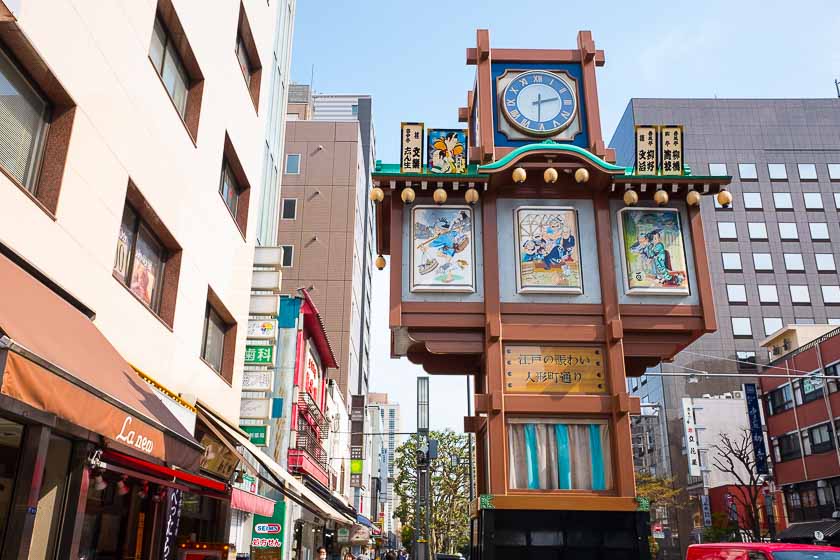
Marionette clock in Ningyocho
Must-visit attractions and landmarks in Ningyocho
One of the most iconic features of Ningyocho are the two large marionette clocks installed in 2009. Located on opposite sides of Ningyocho-dori Avenue, these 8-meter-high antique-looking clocks perform a "puppet show" every hour between noon and 7 pm. This charming spectacle pays homage to the area's history as a center for puppet theater and entertainment.
The Suitengu Shrine is another must-visit landmark. This gleaming gold Shinto shrine, perched on a one-story high platform, is dedicated to the deity of safe childbirth. It's particularly busy on the 5th of every month, drawing crowds from all over Tokyo. The shrine's modern architecture, completed in 2016, provides an interesting contrast to the traditional buildings in the area.
Art enthusiasts should not miss the Musée Hamaguchi Yozo: Yamasa Collection. This museum showcases the works of Yozo Hamaguchi, a pioneering Japanese print maker who invented the "mezzotint" technique. While it primarily features Hamaguchi's works, the museum also hosts exhibitions covering a variety of Japanese artists.
For those interested in literary history, there's an inconspicuous plaque on Amazakeyokocho commemorating the birthplace of Junichiro Tanizaki, a prominent Japanese author. This subtle marker adds another layer of cultural significance to the neighborhood.
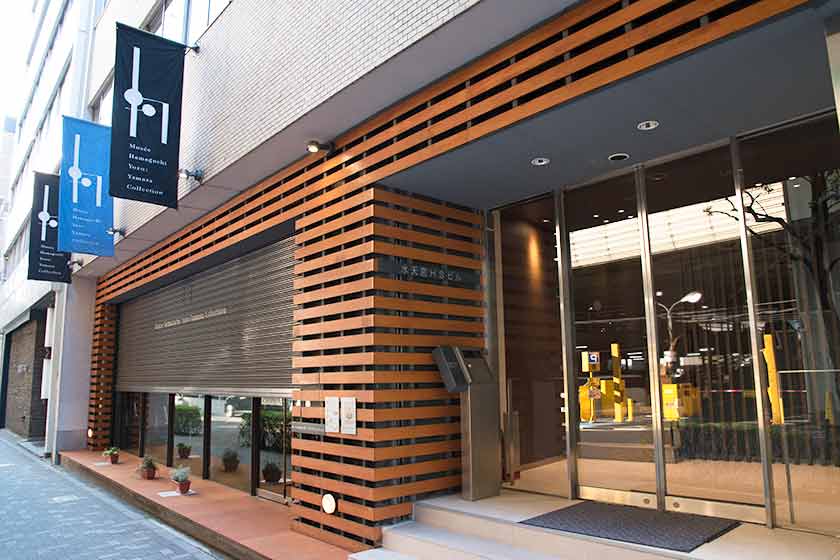
Musée Hamaguchi Yozo: Yamasa Collection
Indulging in traditional Japanese cuisine and sweets
Ningyocho is a paradise for food lovers, offering an impressive array of traditional Japanese cuisine and sweets. The district is renowned for its long-established restaurants and confectionery shops, many of which have been in business for over a century.
One of the must-try local specialties is ningyoyaki, a small cake filled with sweet red bean paste and shaped like a doll or one of the seven lucky gods of Japanese mythology. Shigemori Eishindo, a 100-year-old establishment, is famous for its ningyoyaki with extra-thin, puffy, and moist skin.
For those with a sweet tooth, Amamidokoro Hatsune, established in 1837, offers a variety of traditional Japanese sweets. Their anmitsu, a dessert made of jelly cubes, mochi, fruit, and sweet bean paste topped with sugar syrup, is particularly popular.
Soba enthusiasts should head to one of the local noodle shops to savor freshly made buckwheat noodles. Try the cold soba noodles dipped in tsuyu sauce for a refreshing meal, especially during the hot summer months.
Ningyocho is also home to several long-standing restaurants specializing in various Japanese cuisines. From high-end sake bars to casual izakayas, the district offers dining experiences to suit all tastes and budgets.
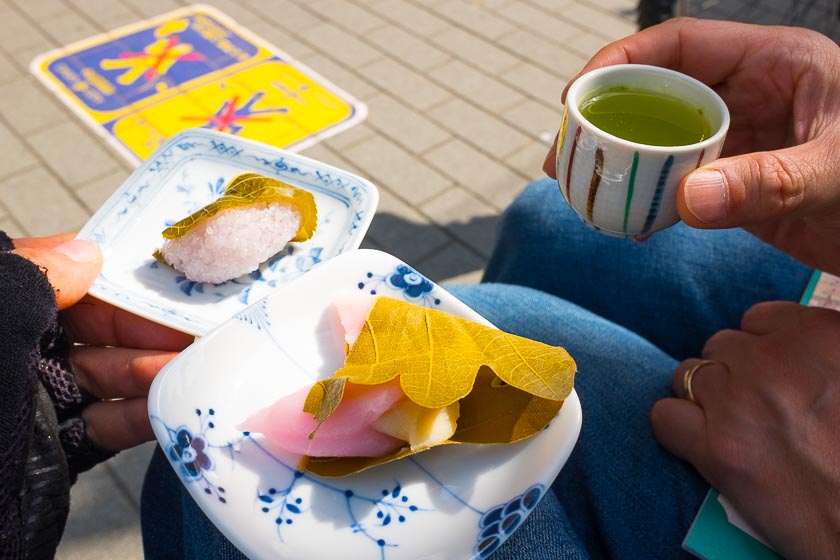
Enjoying traditional Japanese sweets in Ningyocho
Shopping for unique souvenirs and crafts
Ningyocho's shopping scene is characterized by small, specialized shops selling traditional crafts and unique souvenirs. The district's main shopping street, Amazakeyokocho, is lined with stores offering a wide range of products, from traditional Japanese sweets to handmade accessories.
For those interested in traditional Japanese crafts, several shops in the area sell handmade dolls, kimonos, and other artisanal products. These items, crafted using techniques passed down through generations, make for authentic and meaningful souvenirs.
Tea enthusiasts should visit Koume Chasou, a shop tucked away in one of the side alleys. Here, you can find an assortment of teas and teaware from Japan, China, and Taiwan. The friendly staff often invite customers to sit and sample their tea of the day, providing a relaxing break from sightseeing.
For a unique gift, consider visiting Yuuma, a small shop selling handmade accessories and items made with colorful Japanese fabrics. Their products, ranging from bags and purses to cute cat dolls, are crafted with love and aim to strengthen the bond between Japanese people and their cultural traditions.
Don't forget to check out Soukaya, a senbei (rice cracker) shop that has been maintaining its traditional recipe since 1928. Watching the owner hand-grill senbei in the corner of the store is a treat in itself, and these crispy snacks make for excellent edible souvenirs.
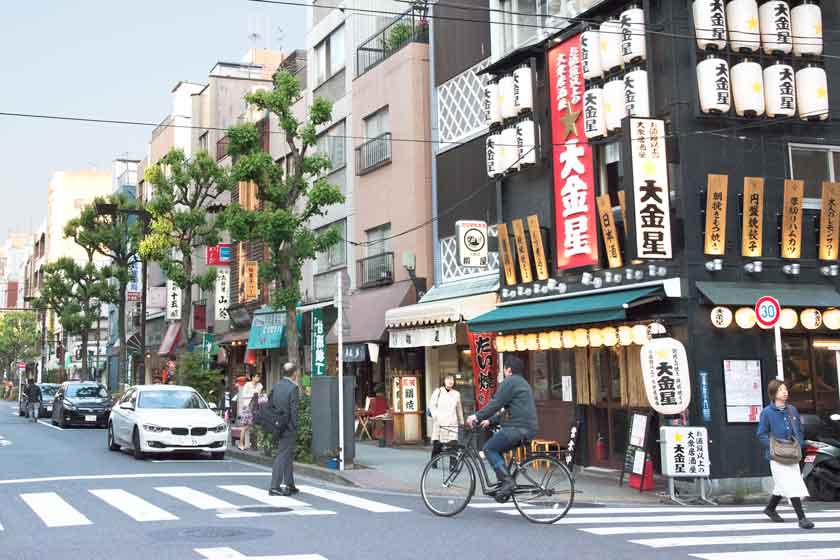
Amazakeyokocho Avenue, Ningyocho
Experiencing local festivals and events in Ningyocho
Ningyocho comes alive throughout the year with various festivals and events that showcase the area's rich cultural heritage. These celebrations offer visitors a chance to immerse themselves in local traditions and experience the community spirit of the neighborhood.
One of the most popular events is the Amazake Yokocho Festival, held in March. This spring event takes place in the Amazake Yokocho area, where complimentary non-alcoholic amazake (a sweet, fermented rice drink) is served. The festivities continue until all the amazake is gone, creating a lively atmosphere in the street.
In May, the Suitengu Shrine Festival draws large crowds. This is considered the most important of the festivals at Suitengu Shrine, featuring temporary shops packed in and around the shrine grounds.
October brings the Ningyocho Ten-Ten Festival, organized by a local youth group to share Ningyocho traditions. The festival takes place at Suitengu Shrine and is named after the old Japanese saying that a child is born after ten months and ten days of pregnancy.
For those visiting in January, the Shichifukujin Meguri is a unique experience. This is a pilgrimage to seven temples in the Ningyocho area to worship the seven lucky gods of Japanese mythology. It's a popular way to start the new year and is believed to bring good fortune.
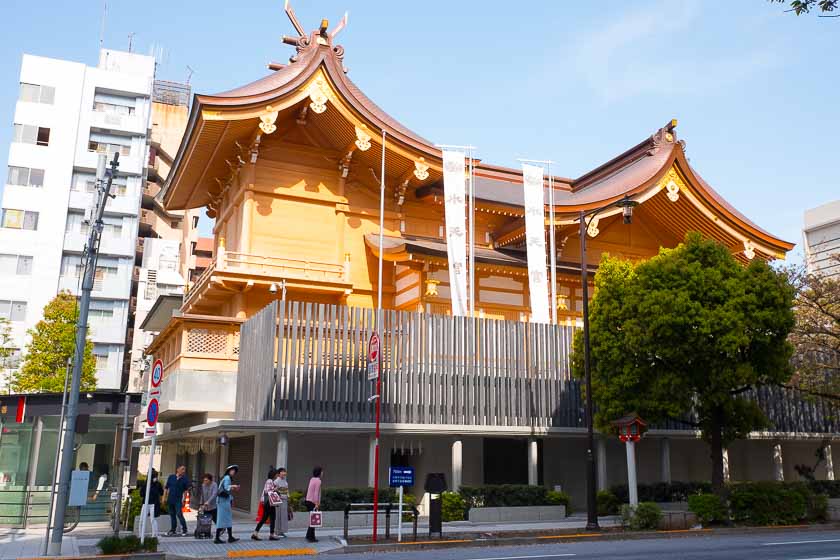
Suitengu, near Ningyocho
Practical tips for visiting Ningyocho
When planning your visit to Ningyocho, keep in mind that the best way to experience the area is on foot. The narrow streets and hidden alleys are perfect for leisurely strolls, allowing you to discover charming shops and eateries at your own pace.
The best time to visit is during weekdays when the area is less crowded. If you're interested in seeing the marionette clock performances, plan to be there on the hour between noon and 7 pm.
While many shops and restaurants in Ningyocho are open throughout the week, some traditional establishments may be closed on Sundays and public holidays. It's always a good idea to check opening hours in advance, especially if there's a specific place you want to visit.
For easier navigation, consider picking up a map of the area from the tourist information center or your hotel. Many of Ningyocho's attractions are within walking distance of each other, but a map can help you plan an efficient route.
Lastly, while Ningyocho is generally less touristy than other parts of Tokyo, basic Japanese phrases and etiquette are always appreciated. Learning a few words like "arigatou" (thank you) and "sumimasen" (excuse me) can go a long way in your interactions with local shop owners and residents.
Best accommodation options in and around Ningyocho
Staying in or near Ningyocho allows you to fully immerse yourself in the local atmosphere and enjoy easy access to the area's attractions. There are several accommodation options to suit different budgets and preferences.
For budget travelers, the Sotetsu Fresa Inn Nihombashi-Ningyocho is a good choice. Located near both Ningyocho Station and Suitengu-mae Station, this smart-looking hotel offers small but comfortable rooms, each with a private bathroom and toilet. The hotel also provides clothes washing and drying facilities for guests.
Mid-range options include the Hotel Horidome Villa. While it's closer to Kodenmacho Station, it's still within walking distance of Ningyocho. The hotel offers great value for money with well-equipped rooms and is surrounded by reasonably priced stores and restaurants.
For those seeking a more luxurious stay, the Royal Park Hotel Tokyo is an excellent choice. Located near Suitengumae Station (just a 6-minute walk from Ningyocho Station), this hotel is known for its cleanliness, comfort, and exceptional service. The breakfast here has a great reputation, and the hotel's atmosphere allows you to enjoy old Tokyo in a convenient location.
Whichever accommodation you choose, staying in or near Ningyocho will provide you with a unique perspective on Tokyo, allowing you to experience the charm of this historical district at your own pace.
Ningyocho offers a fascinating glimpse into Tokyo's past while showcasing the city's ability to preserve tradition amidst rapid modernization. Whether you're interested in history, culture, food, or shopping, this hidden gem in the heart of Tokyo has something to offer every visitor. So step off the beaten path and discover the enchanting world of Ningyocho - a journey through time in the midst of one of the world's most dynamic cities.
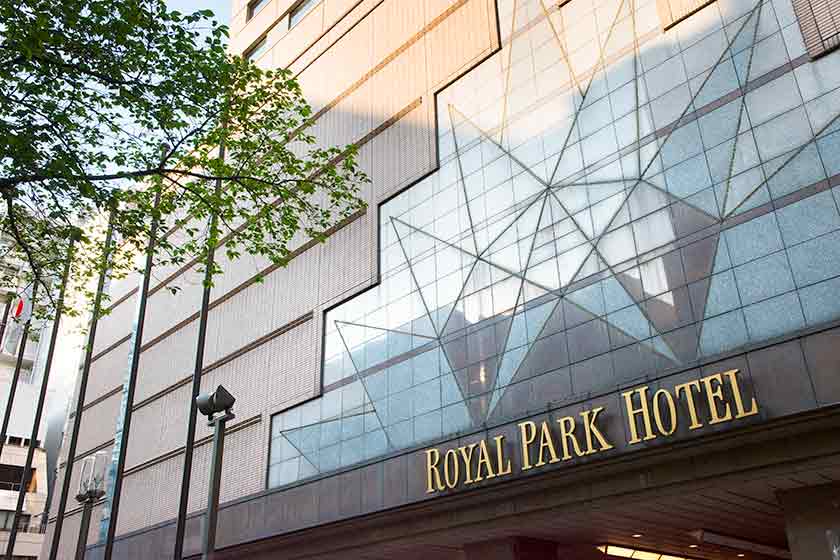
Royal Park Hotel, near Ningyocho
Access
Ningyocho is easily accessible via the Tokyo subway system. The area can be reached from Ningyocho Station on the Toei Asakusa Line and the Tokyo Metro Hibiya Line. Alternatively, you can access the area from Suitengu-mae Station on the Tokyo Metro Hanzomon Line.
From major areas in Tokyo: - From Akihabara: 2 minutes on the Tokyo Metro Hibiya Line - From Ueno: 6 minutes on the Tokyo Metro Hibiya Line - From Asakusa: 6 minutes on the Toei Asakusa Line - From Tokyo Station: About 10 minutes by subway or a 20-minute walk
The compact nature of Ningyocho makes it ideal for exploration on foot once you arrive. Most attractions, shops, and restaurants are within walking distance of the stations, allowing you to easily immerse yourself in the local atmosphere.
Whether you're coming from nearby districts like Akasaka or further afield areas like Kyoto or Osaka, Ningyocho's central location and excellent transport links make it a convenient and rewarding destination for your Tokyo adventure.



